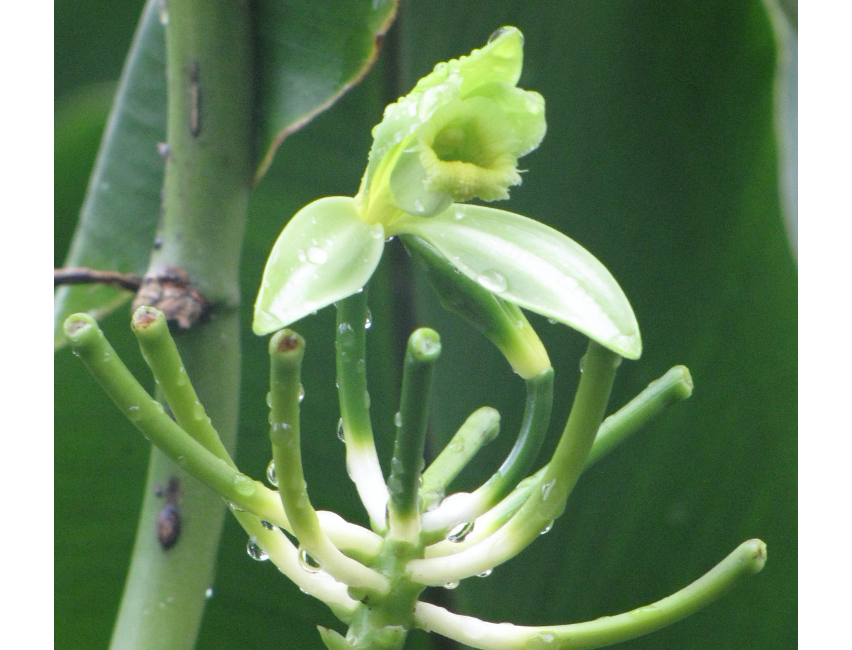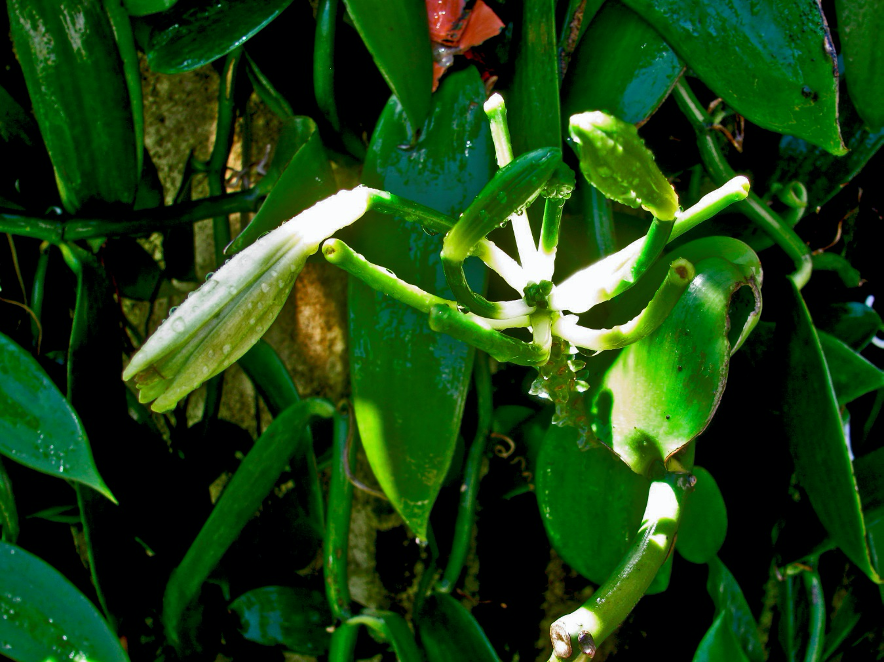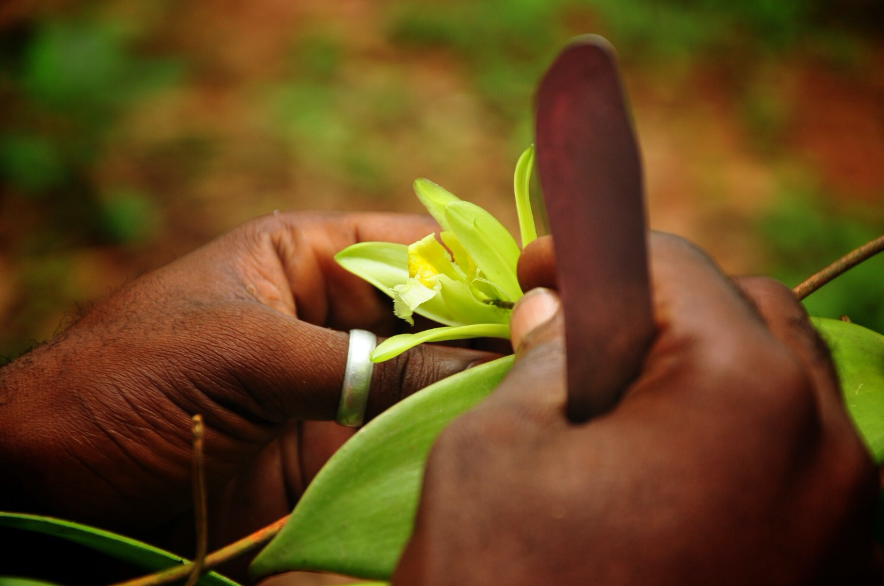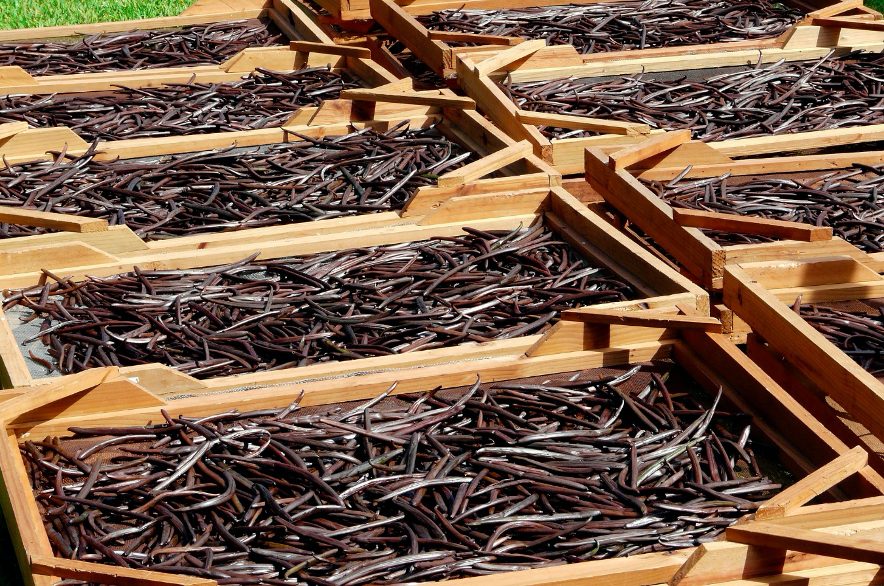Process
Plant description
Vanilla (Vanilla planifolia Jacks. ex Andrews) is native to Mexico and Mesoamerica. It is a climbing orchid with fleshy dark green leaves and stem. Small roots found along the stem allow it to adhere to the trunks and branches of the trees in the rainforest.
Vanilla flowers are pale yellow, and they grow in a racemose inflorescence; the fruit is a pod or capsule.


Vanilla requirements
Vanilla is a tropical species that grows optimally in a hot and humid climate. It benefits from neutral, well-drained and rich soils with plenty of organic matter. It requires shade, humidity and a tutor on which to climb.
Propagation
Vanilla is propagated through cuttings obtained from healthy and vigorous plants. They are planted shortly before the start of the rainy season, between April and June. A part of the cutting is planted in a shallow ditch and covered with organic matter to provide it with nutrients. The rest is tied to the tutor so that is grows vertically.


Pollination
Vanilla is naturally pollinated by native bees. However, this kind of pollination doesn’t produce the necessary amount of pods to satisfy national and international demand for vanilla. Therefore, it is necessary to pollinate vanilla flowers manually with small wood, bamboo or bone picks.
Harvesting and curing
Fruits reach maturity between eight and nine months after pollination. Vanilla is ready for harvest when the tips of the pods turn from green to yellow. Following the harvest, the now called “green vanilla” is submitted to the curing process to develop its characteristic flavor, aroma and color.
